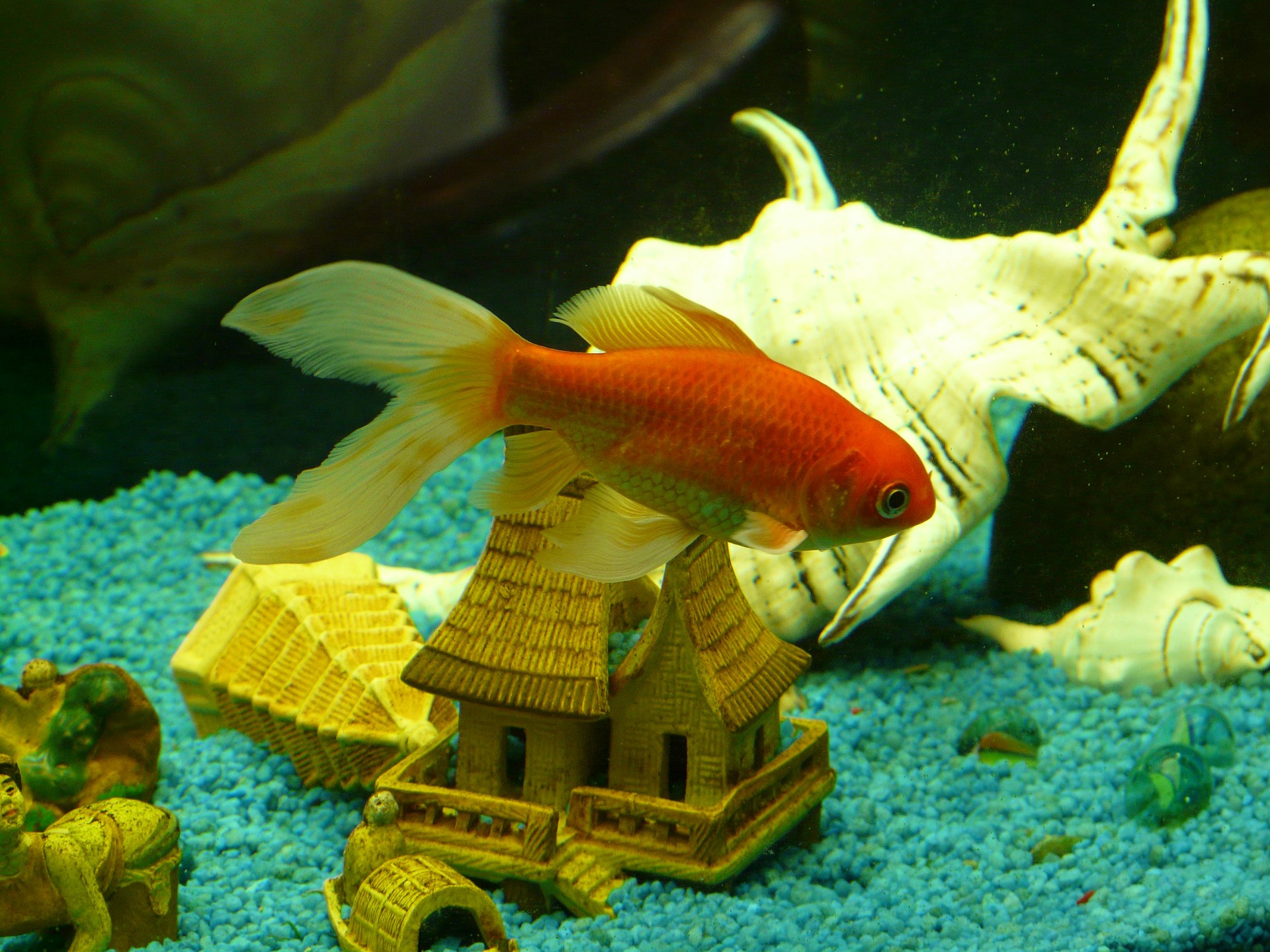
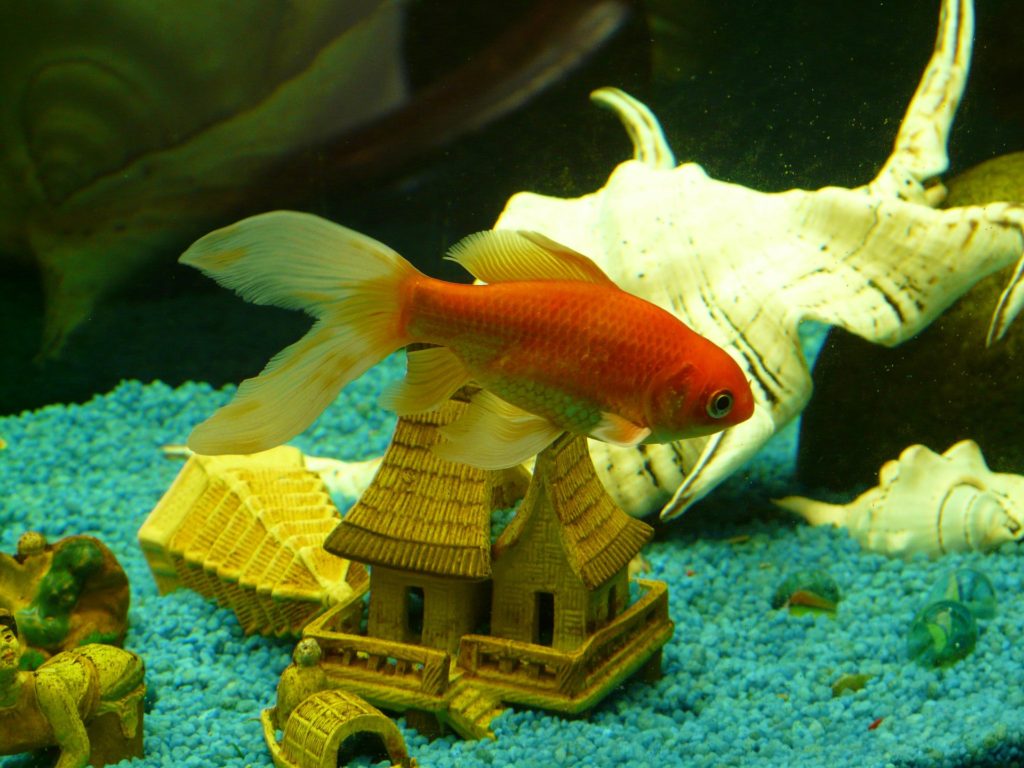
Having a freshwater aquarium is a fun and relaxing hobby. With so many different styles of fish, tanks, and accessories to choose from, no two tanks are alike, allowing children to truly express themselves. Once you get past the initial set up most aquariums have little upkeep and are easy to maintain, which is why fish are awesome “starter pets.” Dive in with us as we discover how to set up the perfect aquarium for your family!
Aquarium Set Up 101
Disclaimer: If you purchase any of the products listed through our affiliate links, we may get a small commission; this does not affect the price of the item or our opinions of it.
Choosing A Tank
Aquariums range in size from 2 gallons to 200 + but for kids a tank in the 5-20-gallon range is usually sufficient. When deciding on a tank size you should first measure the amount of space you have for the aquarium and what it will sit on. (Shelf, desk, its own stand etc.) You should also consider how many fish you plan to have with a good rule of thumb being one inch of fish per two gallons of water.

5 Gallon Aquarium
Small and sleek, 5-gallon aquariums are perfect for an apartment or in a tight spot like the corner of a room or desk. A single male Betta fish would be happy here (provided you have an aqua cave for him to hide in) or smaller varieties like Guppies and Mollies.
Our top pick for a durable and aesthetically pleasing 5-gallon tank is the Marineland Portrait LED 5 Gallon Aquarium Kit because it has rounded corners (think safety for little ones) and a clear glass canopy to allowing viewing from multiple angles. This aquarium is budget friendly and comes with an LED light and a hidden 3 stage filtration system.
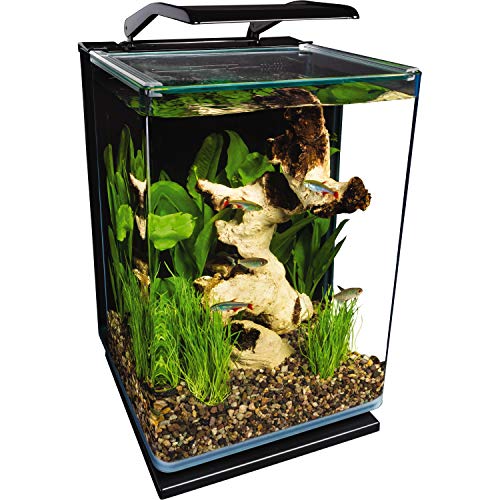
10 Gallon Aquarium
The 10-gallon aquarium allows for more variety in fish and decorations while still being able to sit on a dresser or bookshelf safely. Older kids can easily clean a 10-gallon tank, yet they are heavy enough to not tip over when younger children get up close and personal. Dwarf Gouramis would love to call this tank home as well as Neon Tetras and Swordtails.
This inexpensive Aqua Culture 10 Gallon Aquarium Starter Kit can be picked up at most major retailers or ordered directly from Amazon. This would be an excellent choice if you wanted to design your own unique aquarium as it comes only with the tank, a hood with LED lights, and samples of food and water conditioner. For a tank that is more complete (and also a bit pricier) check out this one at PetSmart.
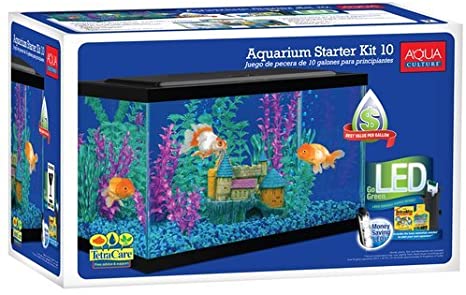
15 Gallon Aquarium
To be honest, the most common jump in size for a tank is from 10 to 20 gallons, but there are some situations where a 15- gallon tank is desirable. Say, for instance, you have a tank with male and female fish species, then a 15-gallon tank would be great for breeding purposes.
The extra space also gives you more tolerance with the water chemistry and can be used to quarantine new fish before adding them to a bigger tank. Danios, Barbs, and Platy Fish would all love a roomy 15-gallon set up.
For a deluxe and oddly shaped aquarium we recommend the SeaClear Acrylic Aquarium Combo Set. This tranquil tank has a hexagonal design and since it is made from acrylic instead of glass, it is lighter than traditional aquariums and clearer, too!
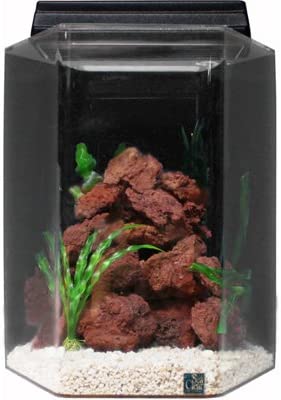
20 Gallon Aquarium
The 20-gallon tank is by far, in our opinion, the best choice for kids or anyone looking to start an aquarium hobby. It’s large enough to have a great variety of fish, yet small enough to maintain. Live plants flourish in a tank this size, and you can even add some other creatures such as snails and crabs.
The Tetra Aquarium 20 Gallon Fish Tank Kit is perfect for someone who desires an almost complete set up at a reasonable cost. With this kit you get the 20 Gallon Glass Aquarium, LED hood, a Tetra Mini UL Heater, one Tetra Whisper 20 Filter, one artificial Boxwood Plant Mat, and four artificial plants.
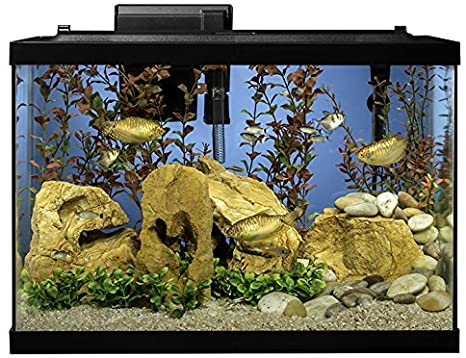
Aquarium Stands
If you are hesitant to rely on a shelf or other piece of furniture to safely hold your new aquarium, then you should check into purchasing an aquarium stand along with your tank. Aquarium stands come in different shapes and materials, and some even serve a dual function with cabinets and shelves to store your fish supplies.
Steel Aquarium Stand
Any type of metal is a great choice for a stand simply because it is sturdy and safe. Steel stands are designed to distribute the liquid weight of your tank evenly and allow for weight fluctuations. Additionally, these stands resist tipping and stay strong when bumped. They may not be as feng shui as some of the other aquarium stands, but they can hold their own. (pun intended)
Check out these cost-effective options that we found; the Aquatic Fundamentals Metal Aquarium Stand and the Aqua Culture 10-20 Gallon Steel Aquarium Stand.
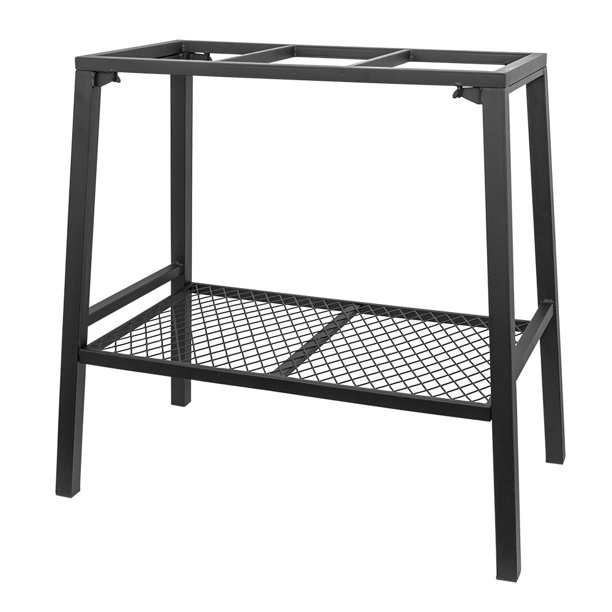
Reversible Aquarium Stand
Even though the Flipper 10/20 Gallon Aquarium Stand is made out of laminated MDF and particle board, it gets a recommendation because of its unique patented design. You can set up the stand one direction for a 10-gallon tank or flip it over to hold a 20-gallon aquarium. Genius! This stand also boasts open and concealed storage giving you 3 compartments for all your fish essentials.
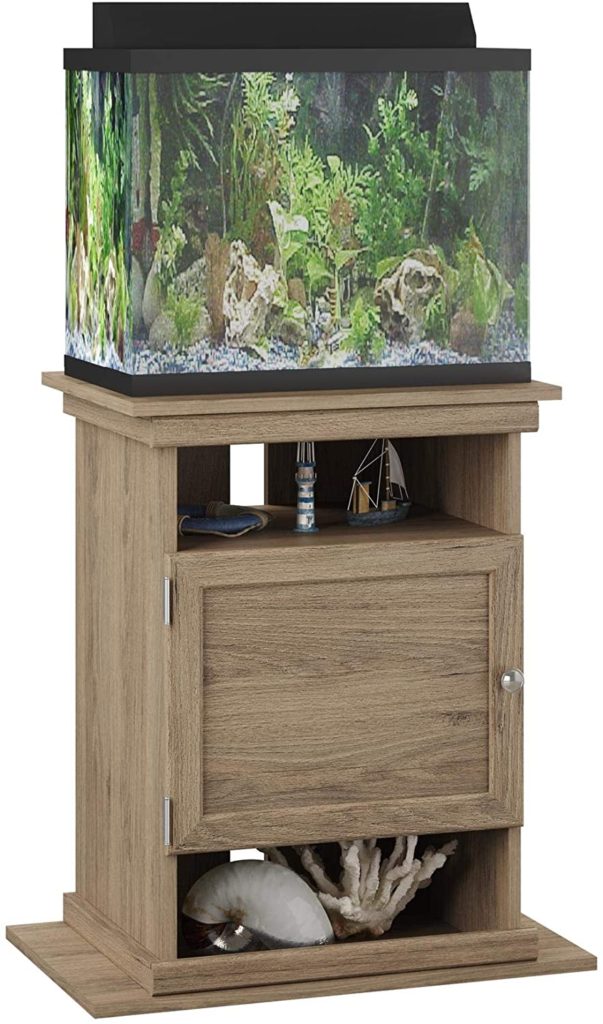
Aquarium Cabinet
If you are looking for an aquarium stand that blends with the rest of your furniture, then give an aquarium cabinet a try. There are many different styles and finishes to choose from including oak, cherry and espresso. Most cabinets will have two shelves inside the cabinet with attractive fixtures and hinges. This Imagitarium Preferred Winston Tank Stand is affordable, durable, and can fit an aquarium up to 29 gallons.
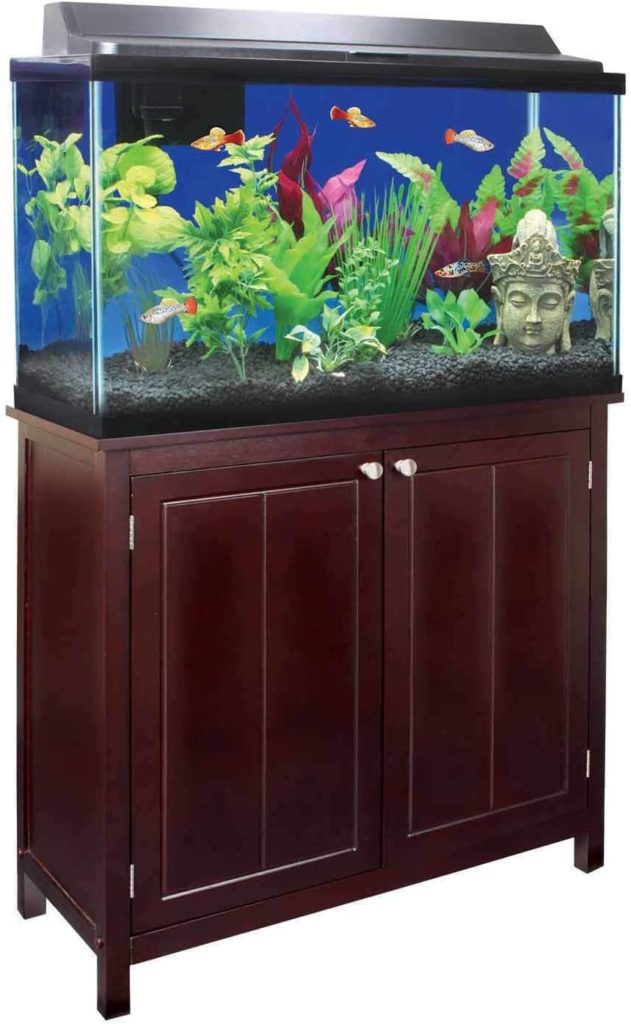
Filtration Systems
Choosing the right filtration system for your new tank is an important process. The very livelihood of your fish depends on how well the aquarium filter siphons left over food particles, plant matter, feces, and toxic compounds from the environment.
When shopping for the perfect system, you must take in consideration that there are three types of filtration necessary for the health of your aquarium: mechanical, chemical, and biological.
- Mechanical Filtration is the process in which particulates are removed from the water
- Chemical filtration removes toxic or unwanted chemicals from the water
- Biological Filtration uses bacteria to covert toxic byproducts
Any system that does not include this filtration trio should be avoided as it will quickly prove to be ineffective and potentially fatal to your fish.
Filtration systems come in many different sizes, price points, and styles as well. Some of the common filter styles you can choose form are internal, under gravel, or power filters.
Internal Filter
Internal filters are simple to set up and use and are usually positioned via suction cups to the side of the aquarium. For most internal filters, an airline needs to be attached to the inlet of the filter which in turn pumps air from a separate pump on the outside of the aquarium. A downside to this setup is the filter and air pump motors can be loud, so consider this beforehand if your tank is in a bedroom. To cut down on the noise factor look for an internal filter with “quiet” in the name such as the Aqueon Quietflow E Internal Power Filter.
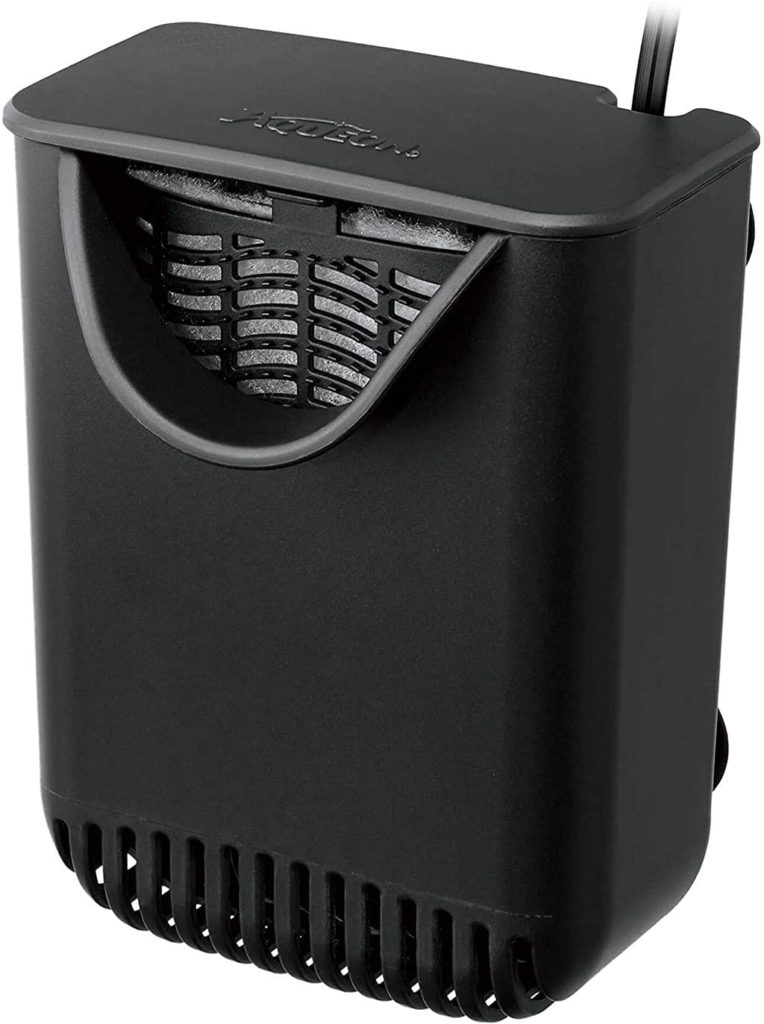
Under Gravel Filter
Under gravel filters (UGF) used to be the norm but as new technology is introduced, they are becoming less common. This type of system is best used for tanks that are well established or will be cleaned on a regular basis. (there goes your weekends) The UGF uses the aquarium particulates (food, feces, etc.) to achieve the biological facet of filtration by trapping the matter under a plate that is concealed with gravel, and in the gravel itself.
At each back corner of the plate is a tube that extends from the plate to the top of the tank. In theory, once the water passes through the plate, the now filtered water is drawn up the lift tube along with bubbles from an air stone at the bottom or by a small motor, called a powerhead, at the top.
The problem with this system arises when the water does not flow evenly through the gravel due to uneven distribution of gravel and things like plants and decorations being placed on the plate. Nitrogen and phosphate levels rise, and water will need to be changed more frequently, which puts a strain on your fish. On the plus side the UGF is at the bottom of the price range for filtration systems and the Penn-Plax Premium Under Gravel Filter System comes with everything you need.
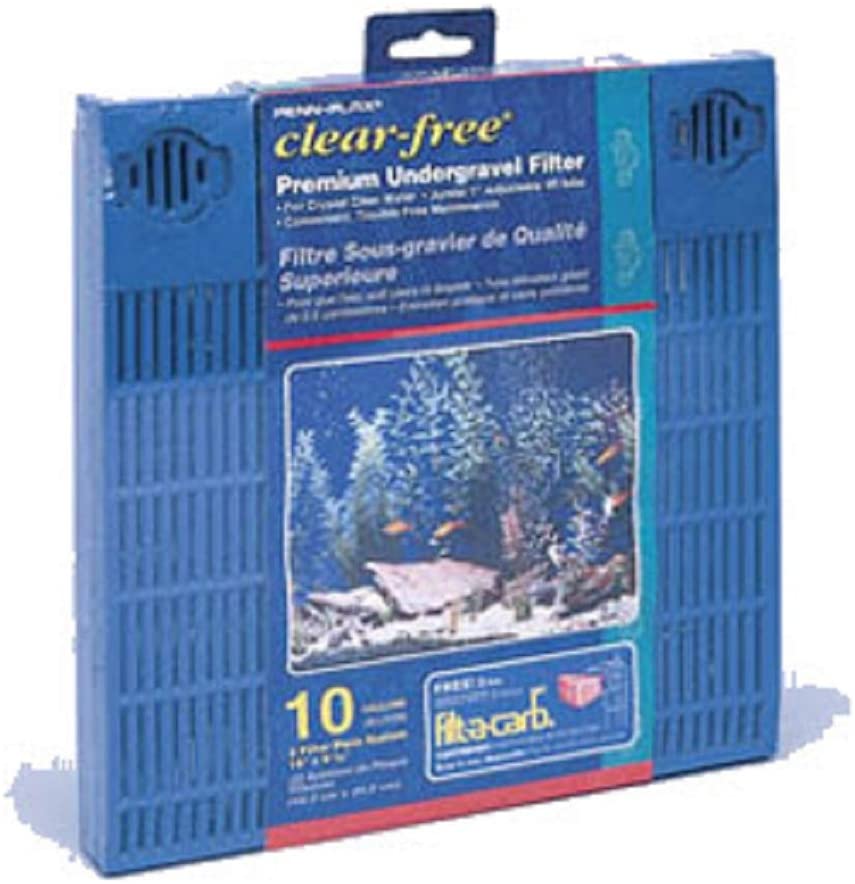
Power Filter
The Power aquarium filtration system hangs off the back of the aquarium and often offers superior filtration and energy efficient pumps to lower operating costs. This filter comes as an all-in-one self-contained unit and although they cost more initially, this filter easily pays for itself within a few months. One drawback to the power filter is the unit is rather bulky and needs extra space behind the aquarium so it would not be practical if your aquarium were against a wall unit or on a shelf. Our top pick for power filters is the AquaClear, Fish Tank Filter, 5 to 20 Gallons, 110v.
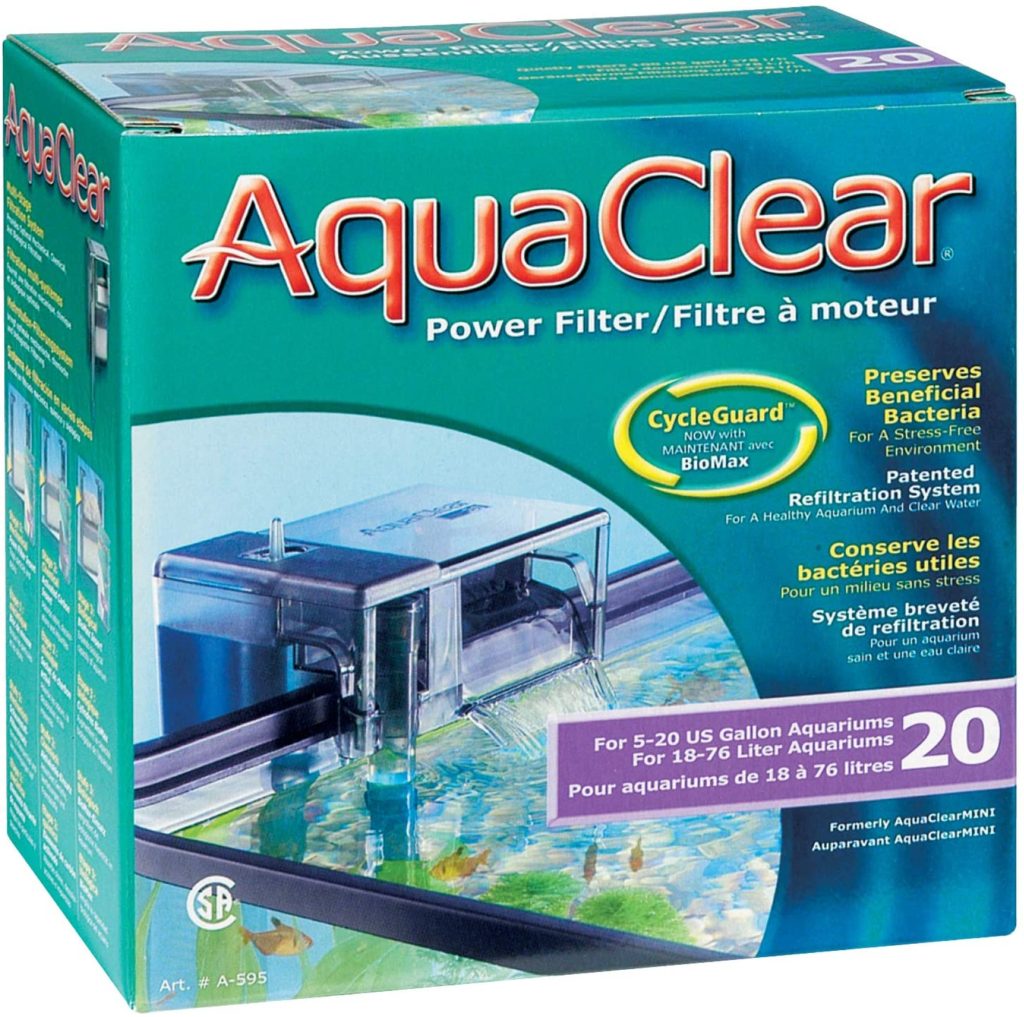
Accessories
Now that you have picked out the perfect aquarium, decided on a stand and what the best filtration system for your space will be, it is time to focus on accessories. Some items are optional, like the gravel cleaning pump, while others are absolutely necessary. (Have you ever tried to catch a fish without a net?)
Nets
The 4-inch net is the most common size for small fish and plants, and they cost very little. You can also choose an 8-inch net, but for the aquarium set ups we have discussed in this article, the smaller net should suffice. We prefer the Pawfly 4 Inch Aquarium Net Fine Mesh for less than five bucks, and you can scoop them up just about anywhere!
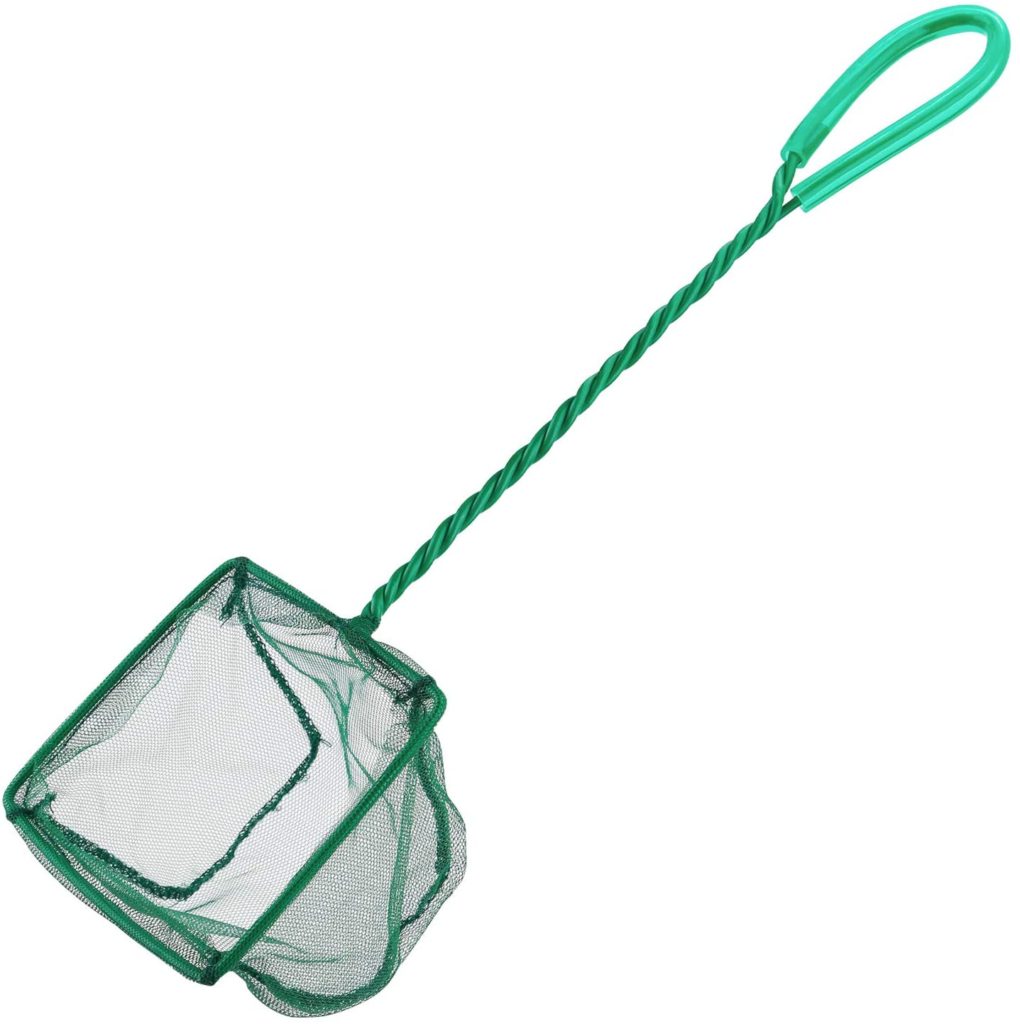
Gravel Cleaning Pump
If you want to spare your back and a lot of extra effort, then you definitely want a graveling cleaning pump. Our go to brand is the 4 in 1 KASAN Gravel Cleaner Pump Aquarium Long Nozzle Cleaning Kit. As described by the manufacturer “The multi-purpose gravel cleaner is equipped with two 15.75-inch tubes for all sizes of fish tanks. Equipped with your own basket filter, it will not suck the fish and sand. Equipped with a holder that can be attached to the aquarium to release hands for ease of use. It does not affect the normal activities of fish when used.”
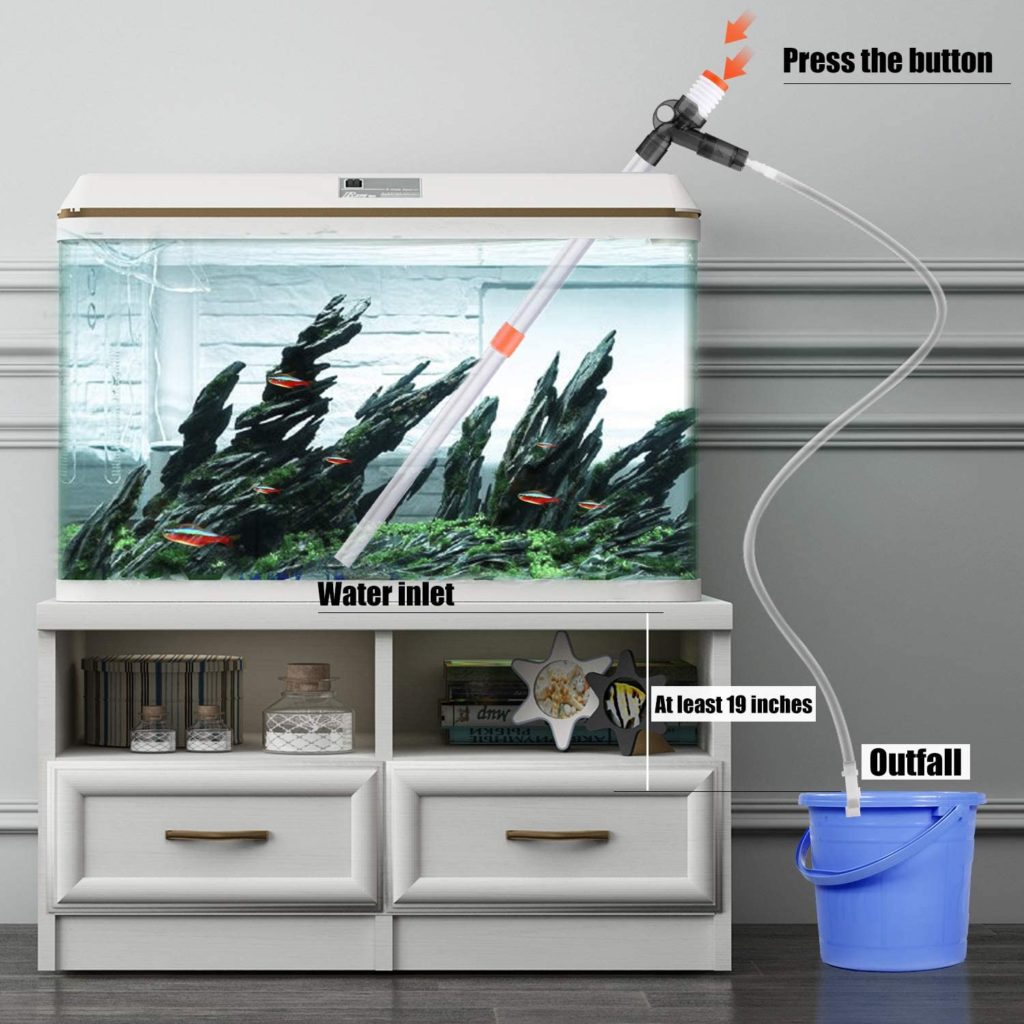
Aquascaping Tools
Another optional but nifty accessory to have are aquarium or “aquascaping” tools. This set made by Capetsma, comes with trimmers for plants, a scraper for algae, and water test strips. The tools do not rust and the tips remain sharp, plus there is a bag to keep all of the items safe and clean.
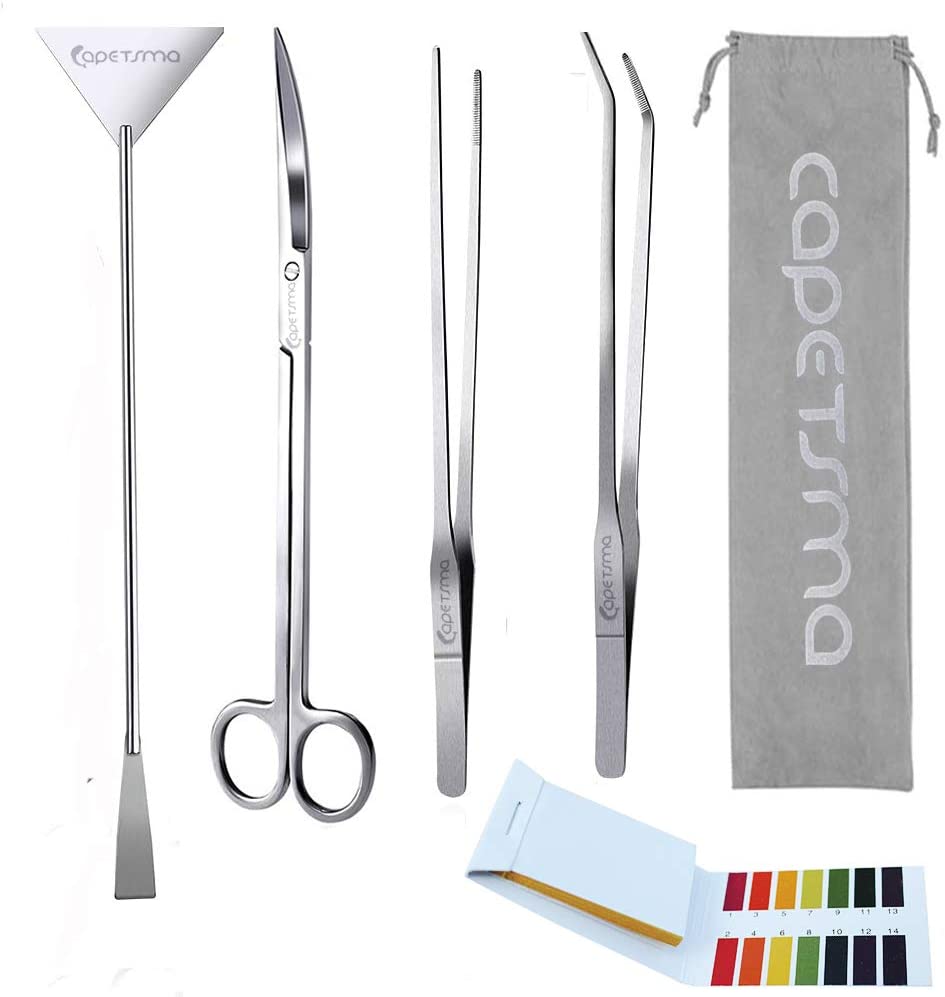
Heater with Thermometer
Most fish prefer a steady water temperature of around 78 degrees. Unlike humans and other mammals, fish do not produce their own body heat. They must rely on the temperature of the water to maintain their body temperature.
If you are someone like me who prefers their rooms to have icicles hanging from the ceiling, then you will definitely want a heater for your tank. Keeping the water temperature at a constant comfort level for fish will increase their activity and longevity so check out the Elive Easy-Set 50W Submersible Aquarium Fish Tank Heater with visible temperature and thermometer, for up to 16 Gallons, or the IOAOI Aquarium Heater for up to 20 Gallons.
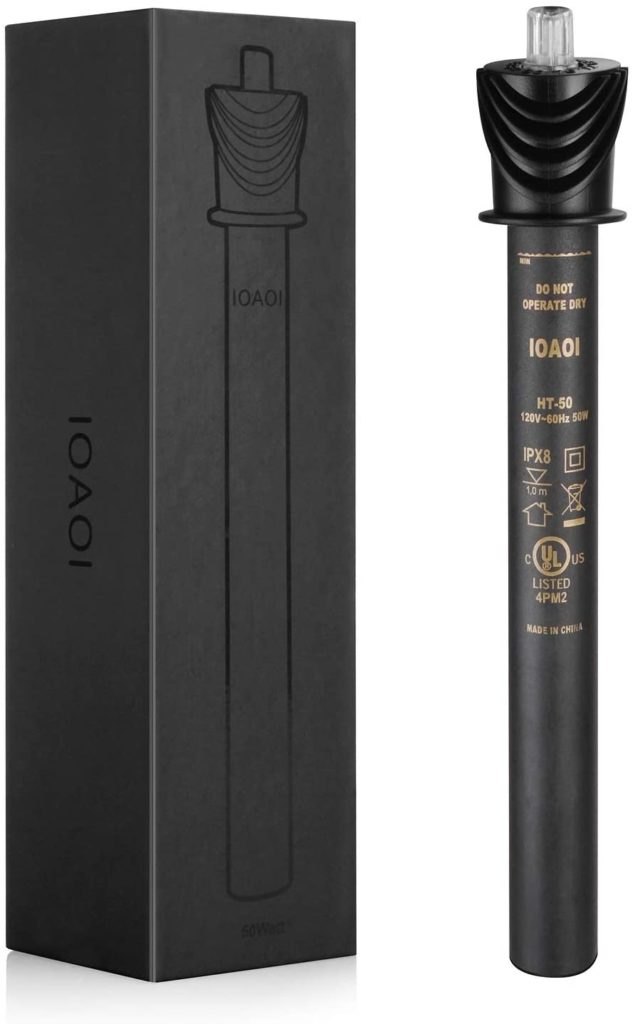
Water Test Strips and Conditioners
The same chemicals used to make tap water safe to drink are highly toxic to fish. Whenever you set up a new aquarium or change out water during a cleaning, it is best to test your water for chlorine, nitrates, and carbonates. You will also want to test your ph and hardness levels. Grab this kit for all your water testing needs, then once you determine if you need to conditioner the water, we recommend API TAP Water Conditioner.
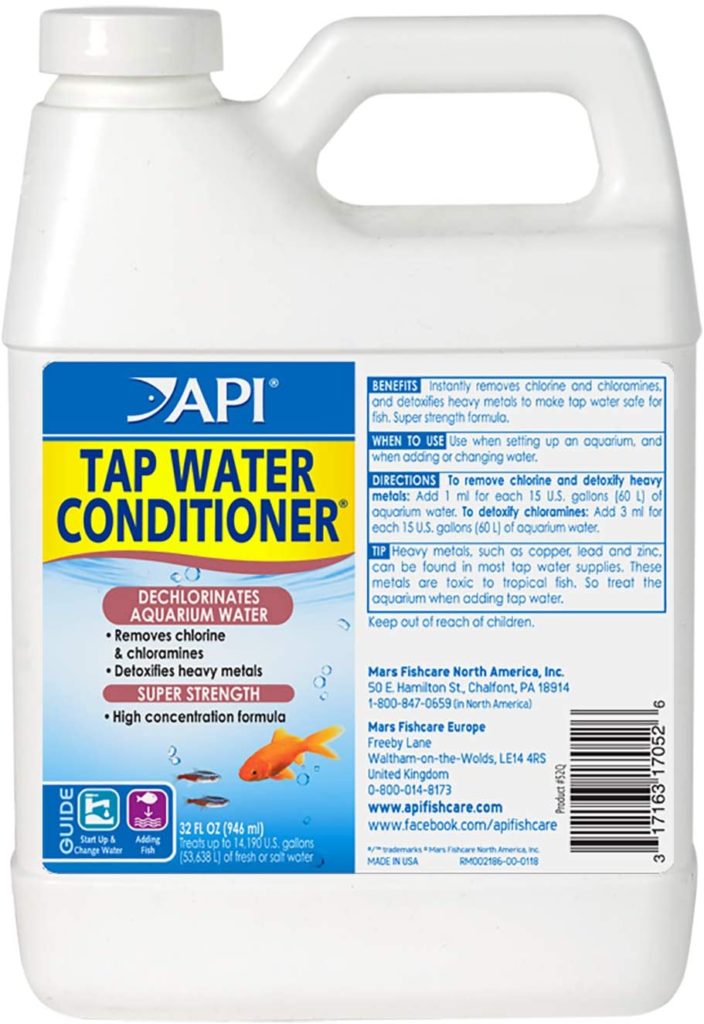
Food
They say variety is the spice of life, and fish food is no exception. If you were a fish, would you like to be fed the same old cardboard tasting flakes day after day? Some species of fish require special diets, so do a little research before deciding on which fish to fill your tank with. Additionally, if you have other creatures like crabs and ghost shrimp, you will need to appeal to their tastes as well. Here are just a few samples your aquarium friends are sure to love.
Tetra TetraPRO Tropical Color Crisps with Biotin
“TetraPro Tropical Color Crisps provide advanced nutrition for the discerning fish-keeper. This nutritionally balanced diet floats longer and feeds cleaner than ordinary flakes; leaving less waste in the aquarium.”
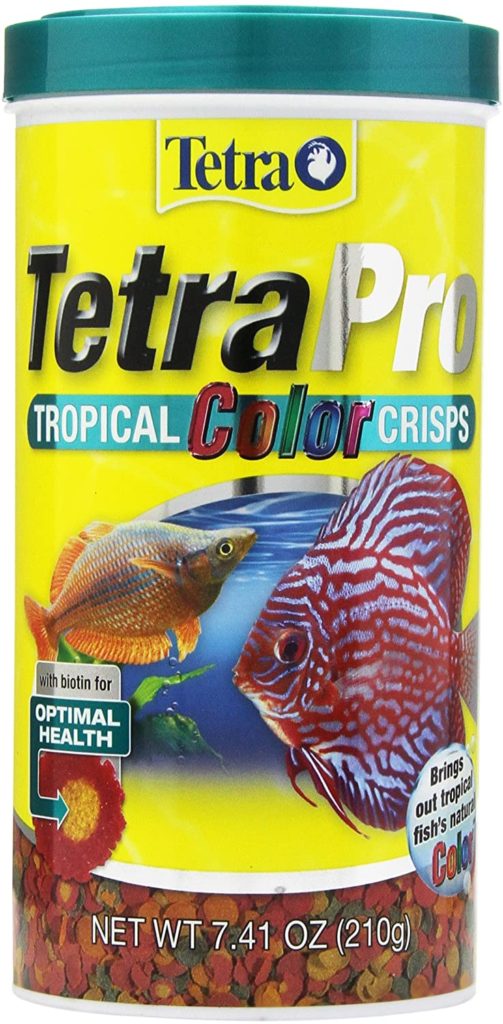
Tetra BloodWorms, Freeze-Dried Food for Freshwater and Saltwater Fish
“Tetra Freeze-Dried Bloodworms are a nutritionally balanced complete diet for optimal health in top- and mid-feeding aquarium fish with antioxidants for healthy cells select proteins for growth and prebiotics for digestion.”
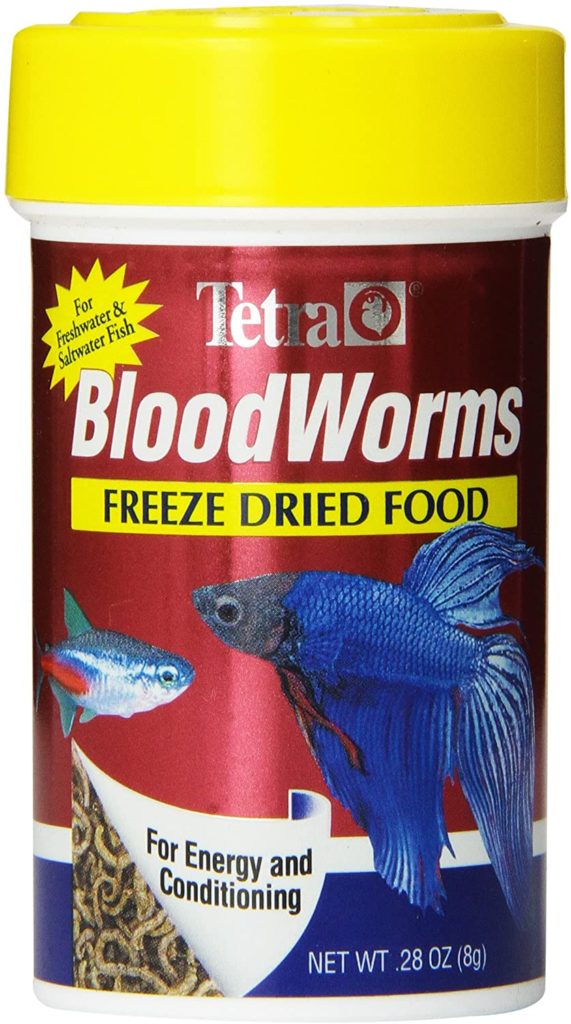
Fluval Bug Bites Tropical Fish Food
“Fluval Bug Bites is a complete fish food that features a unique insect-based formulation, enriched with multiple quality proteins and carbohydrates that are ideal for tropical fish such as bettas, goldfish, cichlids, guppies, and tetras.”
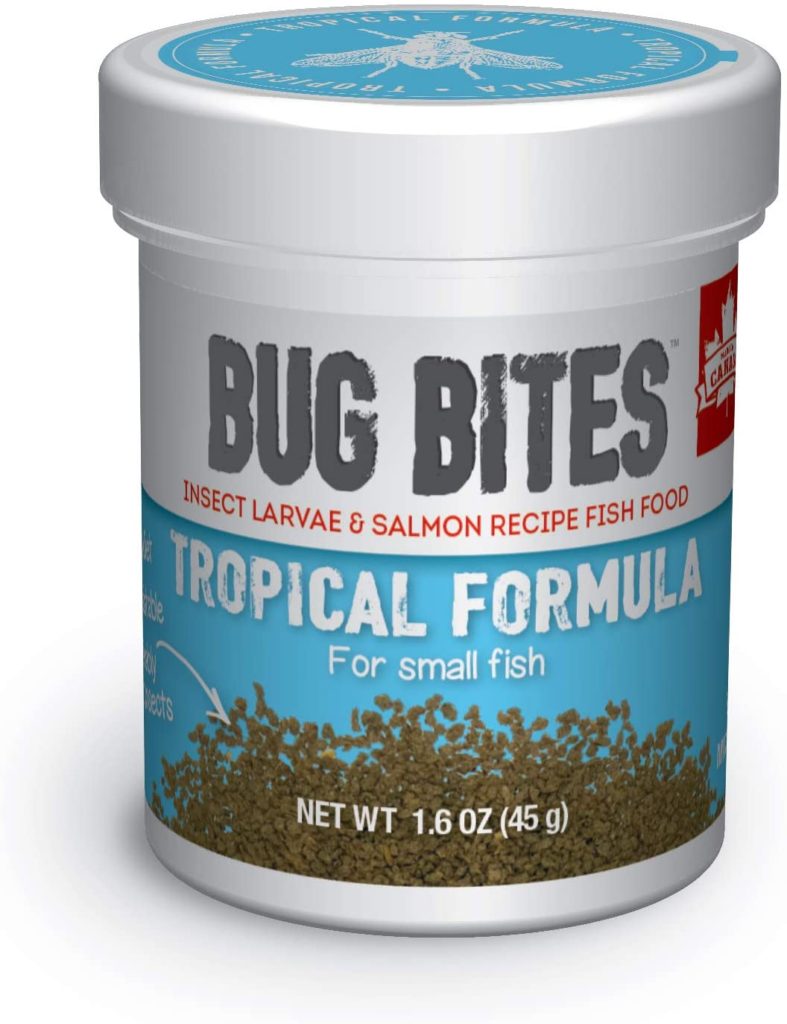
Decorations
After all the equipment is decided and the necessities filled, now comes the best part: the decorations! This stage of the process is where your kids can really get involved and showcase their design talent with all the fun stuff a tank will need to be a tropical paradise. Gravel should be on the list, as well as plants, tunnels, and other places for fish to hide.
Gravel
You can choose small or large rocks, beads, or pebbles. Gravel can be natural in color, neon, or even glow in the dark! A good-sized bag to fill the bottom of the tank is desirable, but not so much it takes space from the fish. A 1.5-to-2-inch layer should suffice, which translates into about 1 pound per gallon of water. This Spectrastone Blue Jean Aquarium Gravel comes in a 25-pound bag so you would even have some left over for emergencies or when you lose gravel while cleaning the tank.
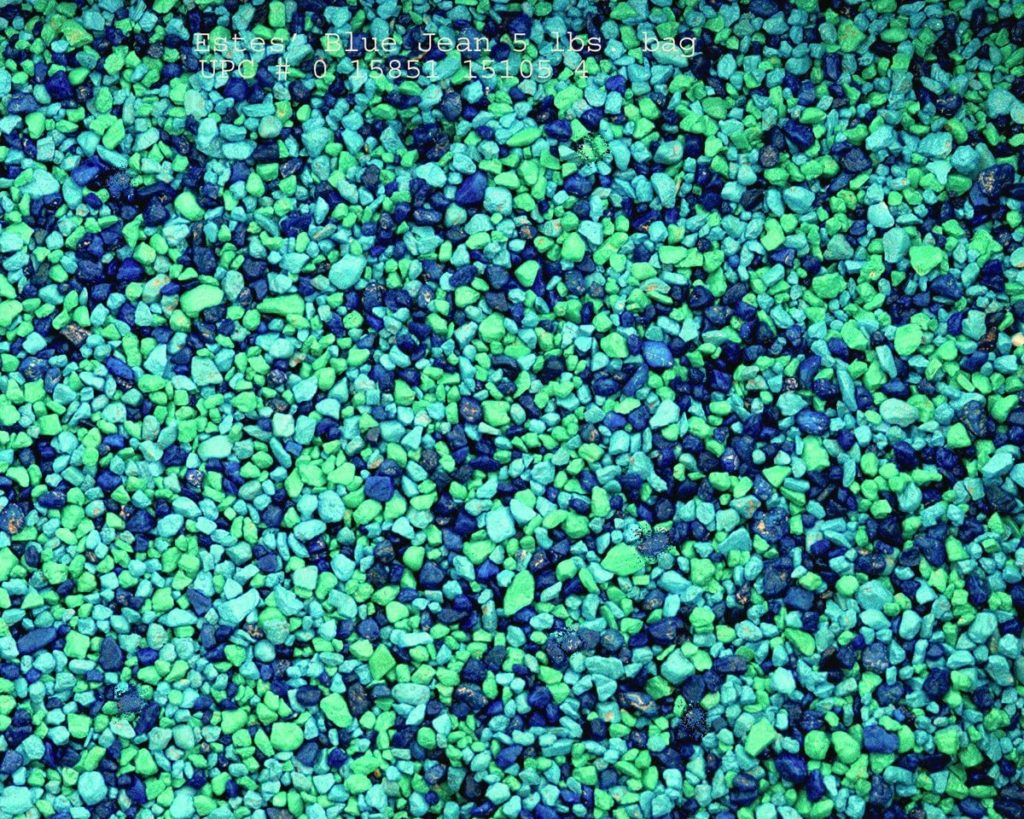
Plants
Artificial plants are the preferred choice over live plants when you are new to aquariums, and especially for children. Like gravel, plastic plants some in a variety of shapes and colors so you can coordinate with your gravel or even your fish! For less than twelve bucks, this MyLifeUNIT artificial fish tank plants kit is a steal, and they have sturdy bases to bury under the gravel, too.
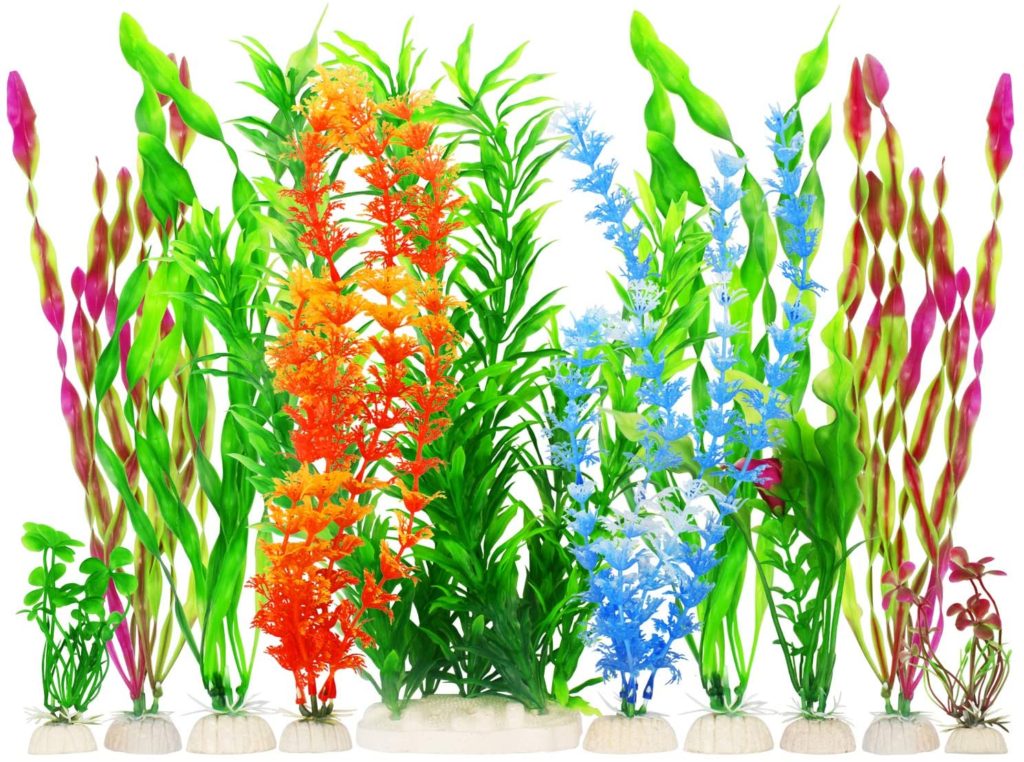
Hiding Spots
Just like humans, fish and other aquatic creatures need a place to hide out every once and a while, and what better place than a log or a cave? Logs are great for shrimp and crabs, and Betta fish adores a good cave to flop around in. This Plecoceramics Aquascape Decoration Ceramic Shelter is one such place to make this happen for your aquarium buddies, and the chance to rest safely will keep them happy.
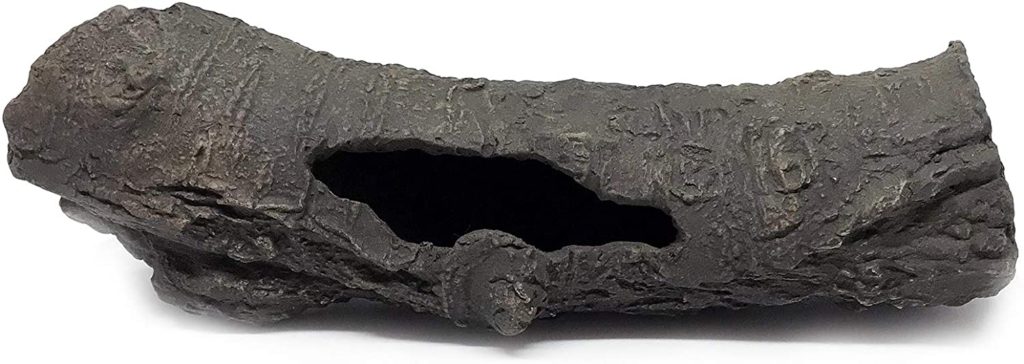
Another great hiding spot is a sunken ship or similar item. These types of decorations are useful if your fish breed and need a place to stash the baby fish. My favorite ship is SLOCME Aquarium Shipwreck Sunken Ship because it fits well with any color scheme.
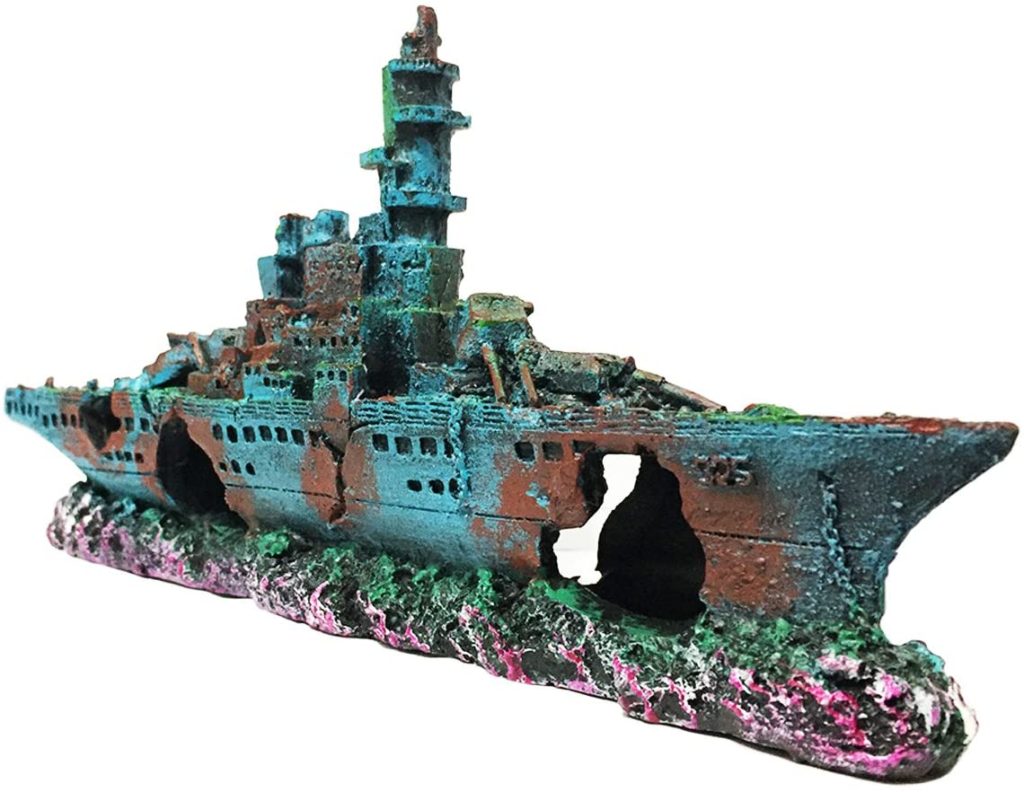
Bubblers
I don’t know about you but if I were a fish, I think it would be a ton of fun to blast though and be shot up by a bubbler decoration. Keep your fish amused for hours with a bubbler like an Ulifery Aquarium Shell Decoration with Air Stone Bubble.
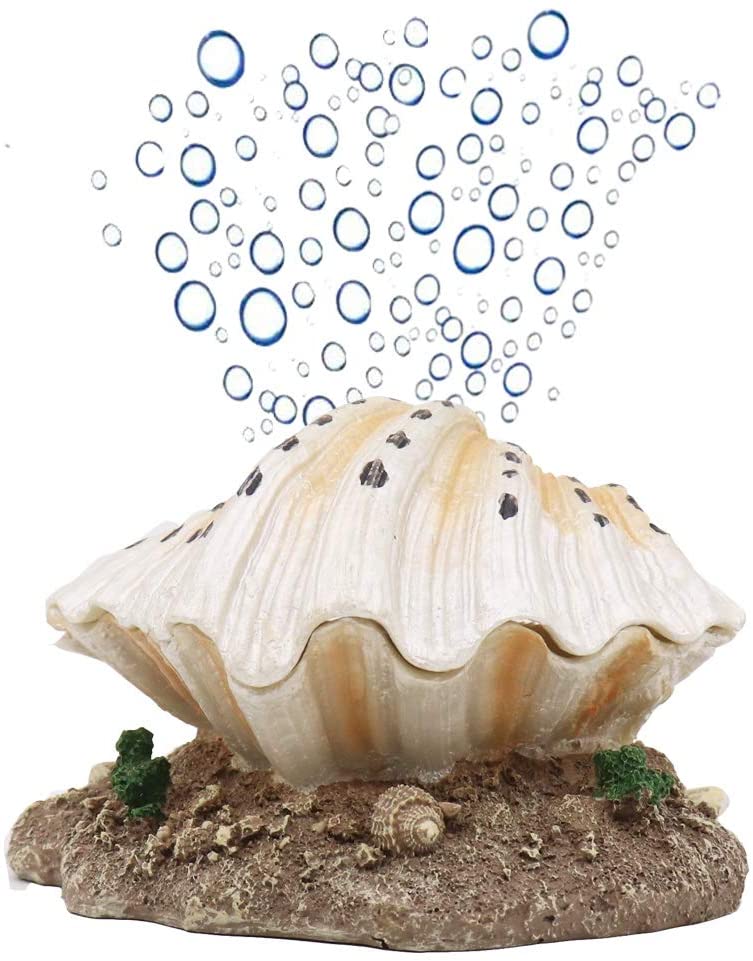
The last and final step in your masterpiece is to pick out your fish. Make sure that you choose species that are compatible (see this book) to avoid tragedy and heartache. With a little bit of time, effort, and creativity, you and your children can create an awesome underwater adventure for your fish and have an enjoyable hobby for years to come.

